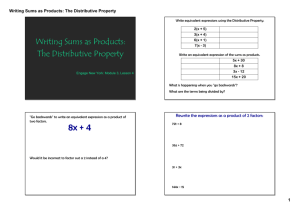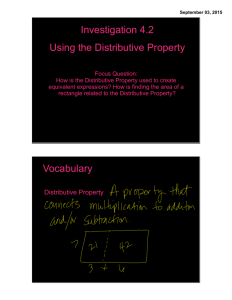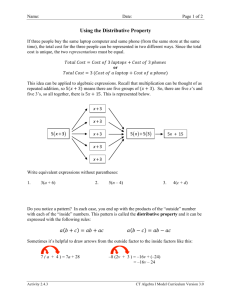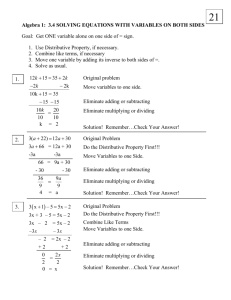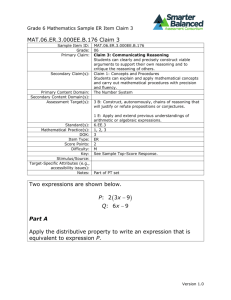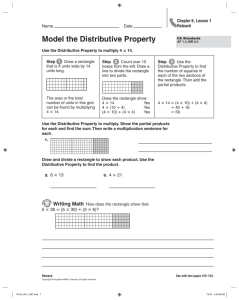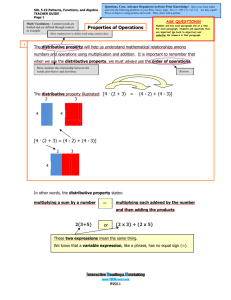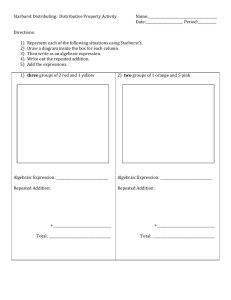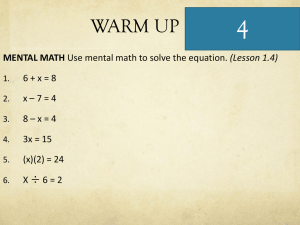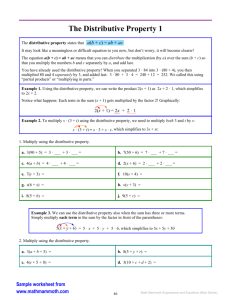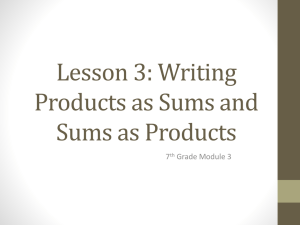7th Grade mod 3 les 4
advertisement
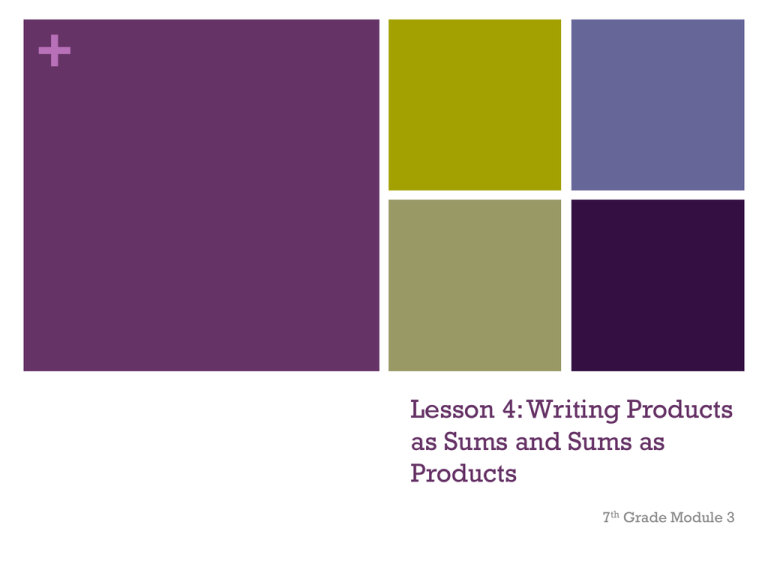
+ Lesson 4: Writing Products as Sums and Sums as Products 7th Grade Module 3 + Example 1 – Write Equivalent Expressions + Write an expression that is equivalent to 8x + 4 + Exercise 1 Rewrite the expressions as a product of two factors. a. 72t + 8 b. 55a + 11 a. 36z + 72 d. 144q – 15 d. 3r + 3s + Example 2 Let the variables x and y stand for positive integers, and let 2x, 12y, and 8 represent the area of three regions in the array. Determine the length and width of each rectangle if the width is the same for each rectangle. + Exercise 2 a. Write the product and sum of the expressions being represented in the rectangular array. a. Factor 48j + 60k + 24 by finding the greatest common factor of the terms. + Exercise 3 For each expression, write each sum as a product of two factors. + Example 3 A new miniature golf and arcade opened up in town. For convenient ordering, a play package is available to purchase. It includes two rounds of golf and 20 arcade tokens, plus $3.00 off the regular price. There is a group of six friends purchasing this package. Let g represent the cost of a round of golf, and let t represent the cost of a token. Write two different expressions that represent the total amount this group spent. Explain how each expression describes the situation in a different way. + Example 4 What is the opposite of 2? What is (–1)(2)? What is (–1)(n)? What is a mathematical expression that represents the opposite of (2a + 3b)? Use the distributive property to write (–1)(2a + 3b) as an equivalent expression. To go from –2a – 3b to –(2a + 3b), what process occurs? + Exercise 4 a. What is the opposite of (–6v + 1)? a. Using the distributive property write an equivalent expression for a part (a). + Example 5 Rewrite 5a – (a – 3b) in standard form. Justify each step, applying the rules for subtracting and the distributive property. 5a – (a – 3b) + Exercise 5 a. Expand each expression and collect like terms. Apply the rules of subtracting and the distributive property (justify your steps). –3(2p – 3q) b. –a – (a – b) + Summary When you take the opposite of a term or factor you are multiplying by –1. Writing sums as products is the opposite of writing products as sums: so, instead of distributing and multiplying, the product is being factored. + Examples of Homework problems 1. Write each expression as the product of two factors. a. 1•3 + 7•3 2. Write each sum as a product of two factors. a. 6•7 + 3•7 6. Write each expression in standard form. a. -3(1 - 8m – 2n) + Exit Ticket Homework is Problem Set for Lesson 4.
